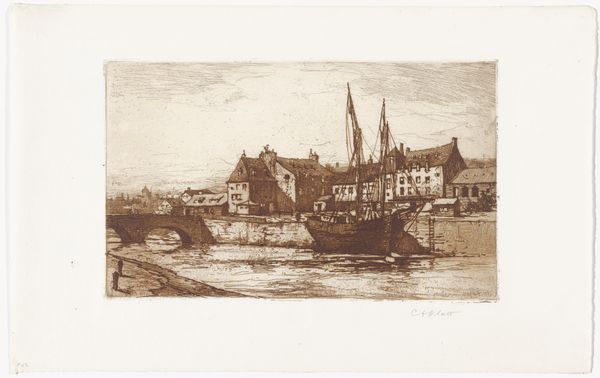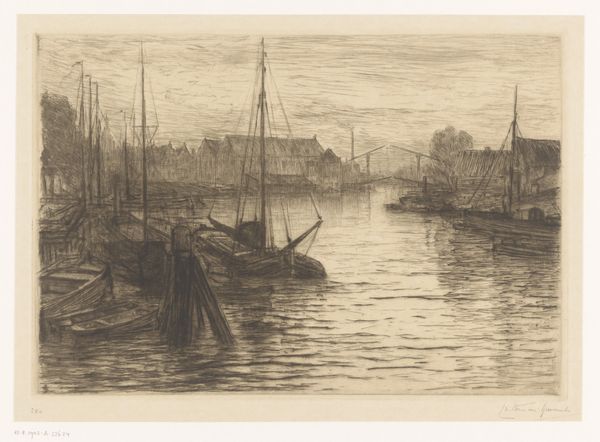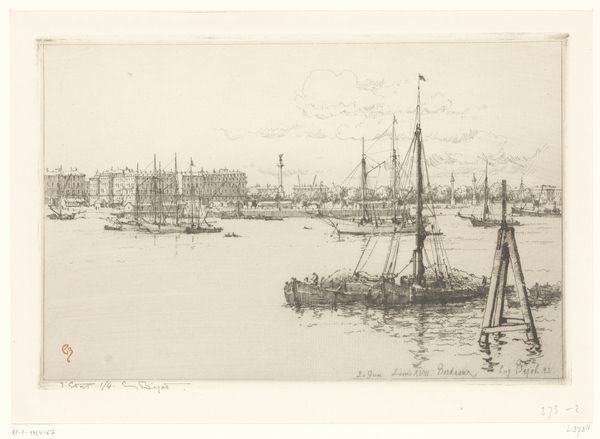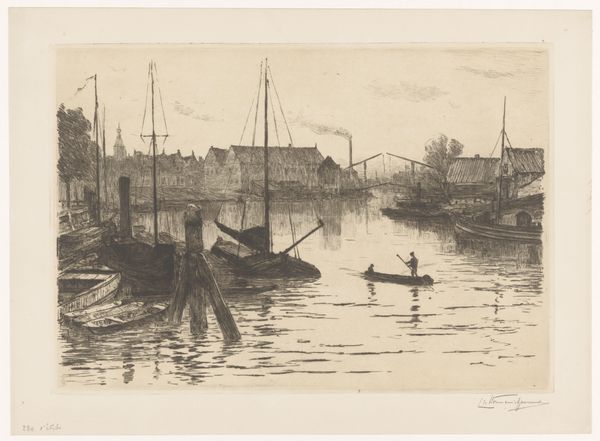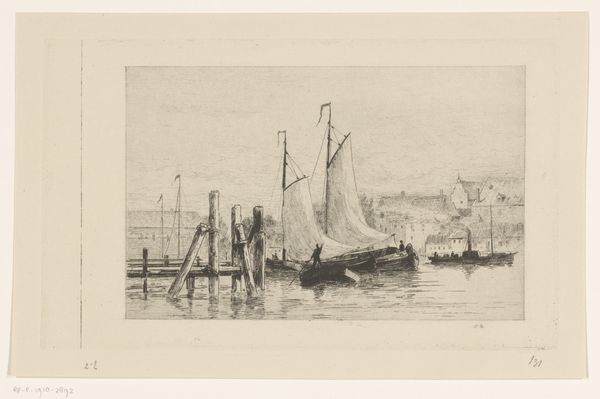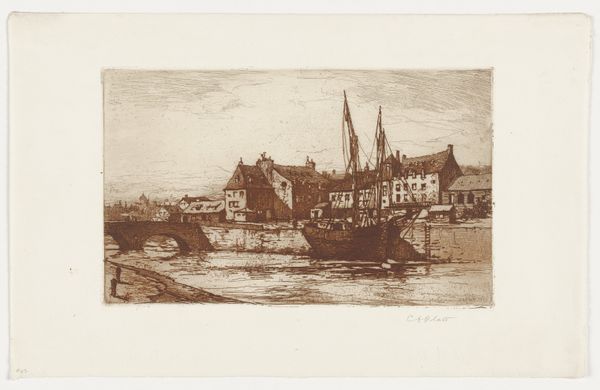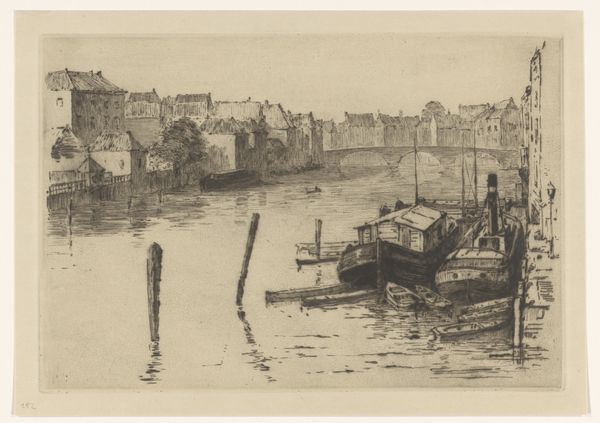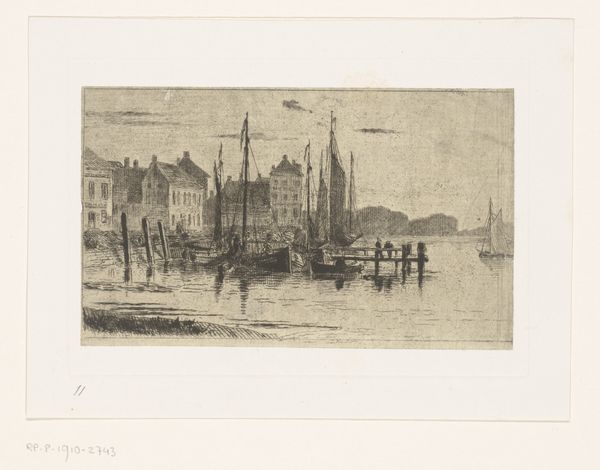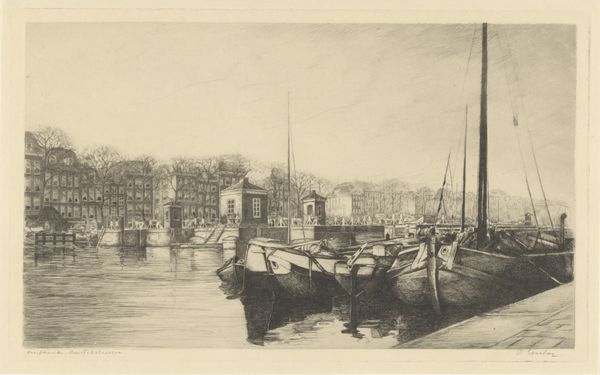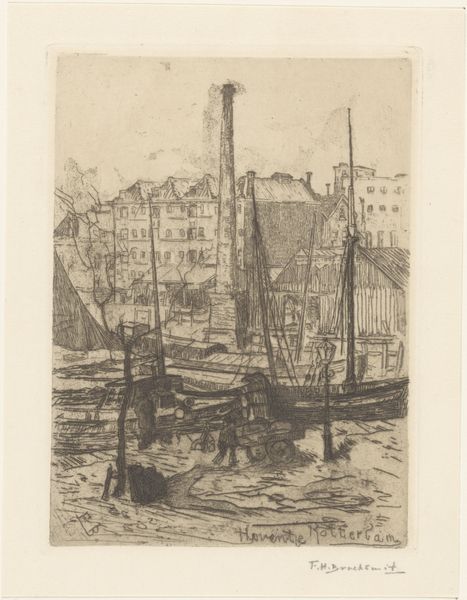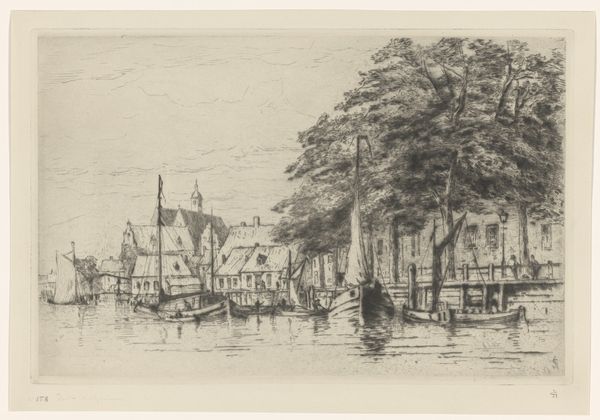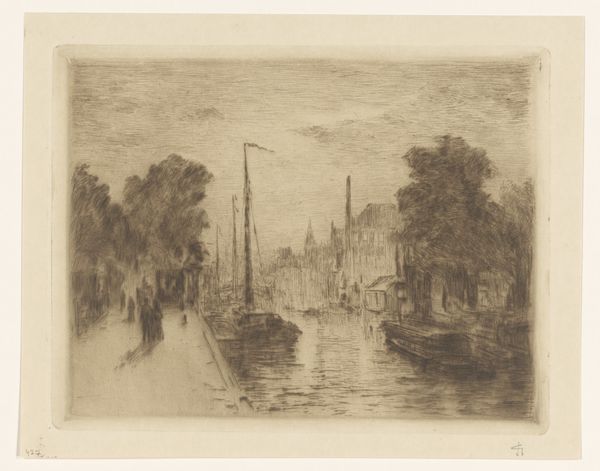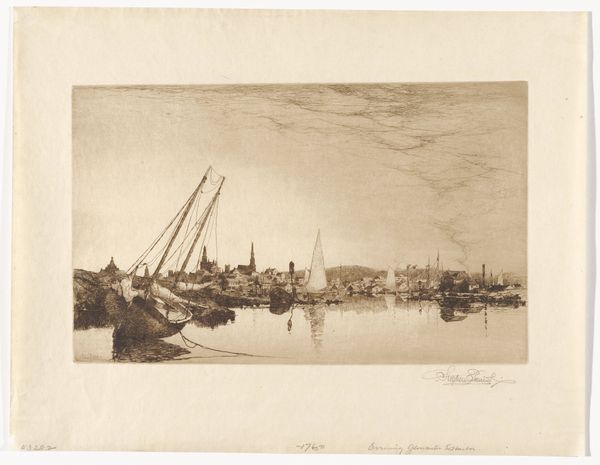
Dimensions: height 178 mm, width 217 mm
Copyright: Rijks Museum: Open Domain
Eugène Bejot created "Kade van Bourgogne in Bordeaux" using etching, a printmaking technique with a rich history. The effect relies on the corrosive action of acid, biting into a metal plate where the artist has drawn an image. The incised lines then hold ink, which is transferred to paper under pressure. The physical qualities of the etching – its fine lines and tonal range – lend themselves well to depicting the bustling port. The technique allows for a detailed rendering of the quayside activity. Bejot expertly captures the texture of the stone, the reflections on the water, and the rigging of the boats. Consider the labor involved, from the initial drawing to the skilled application of acid, inking, and printing. Etching, like many printmaking processes, enabled the wide distribution of images, feeding a growing market for art. This piece collapses the traditional distinction between fine art and craft, reminding us that all artworks are products of specific processes.
Comments
No comments
Be the first to comment and join the conversation on the ultimate creative platform.
